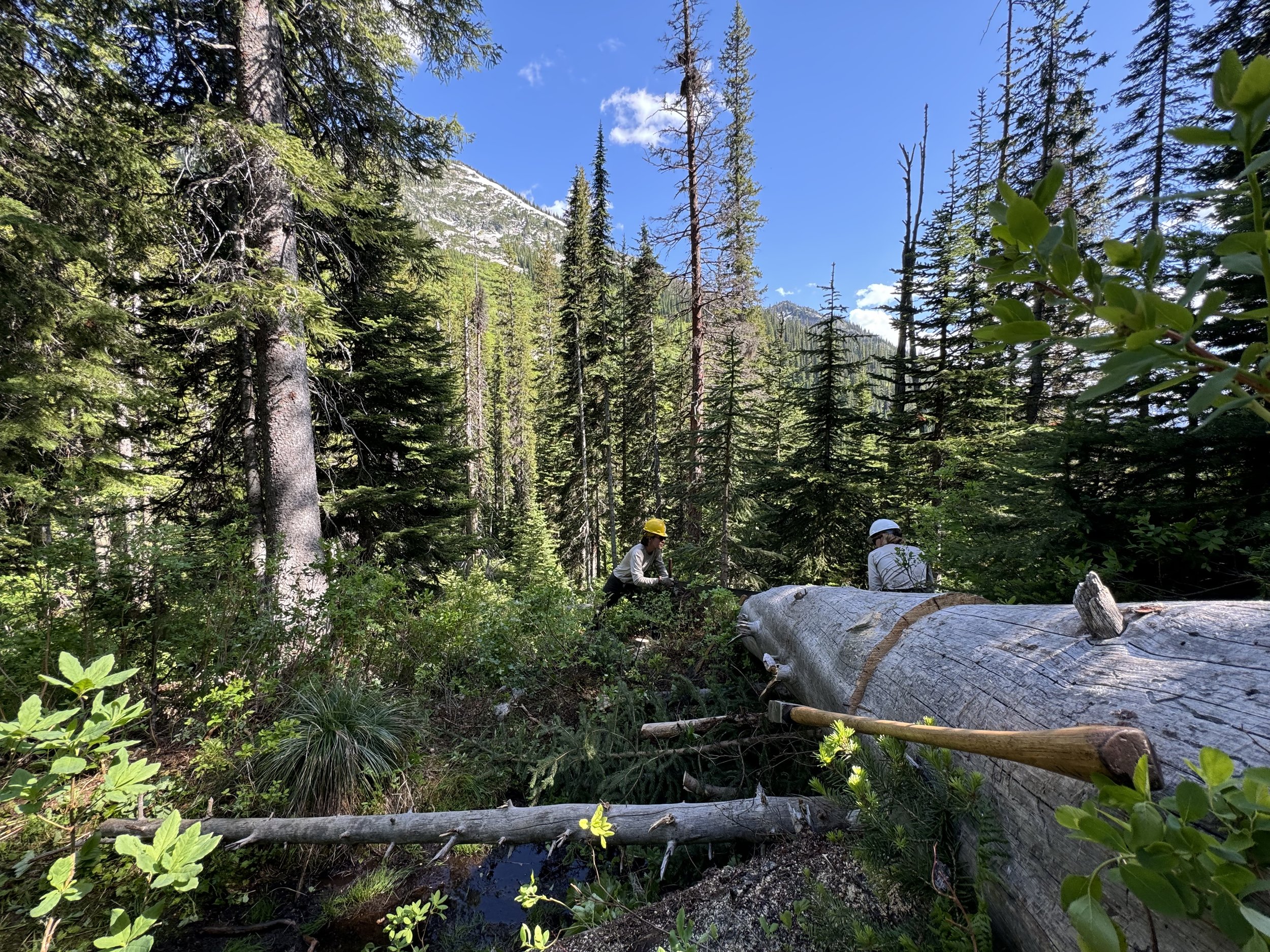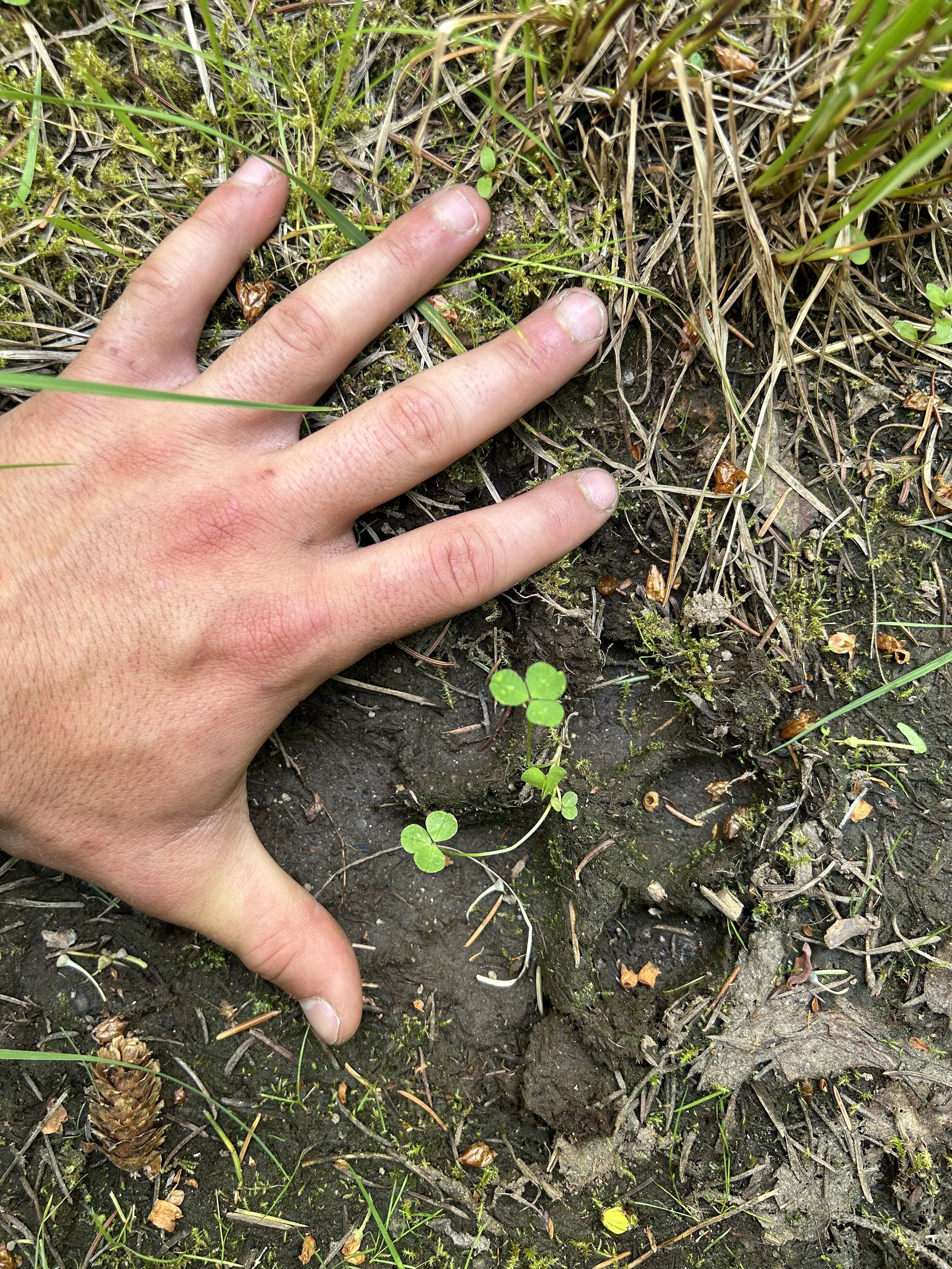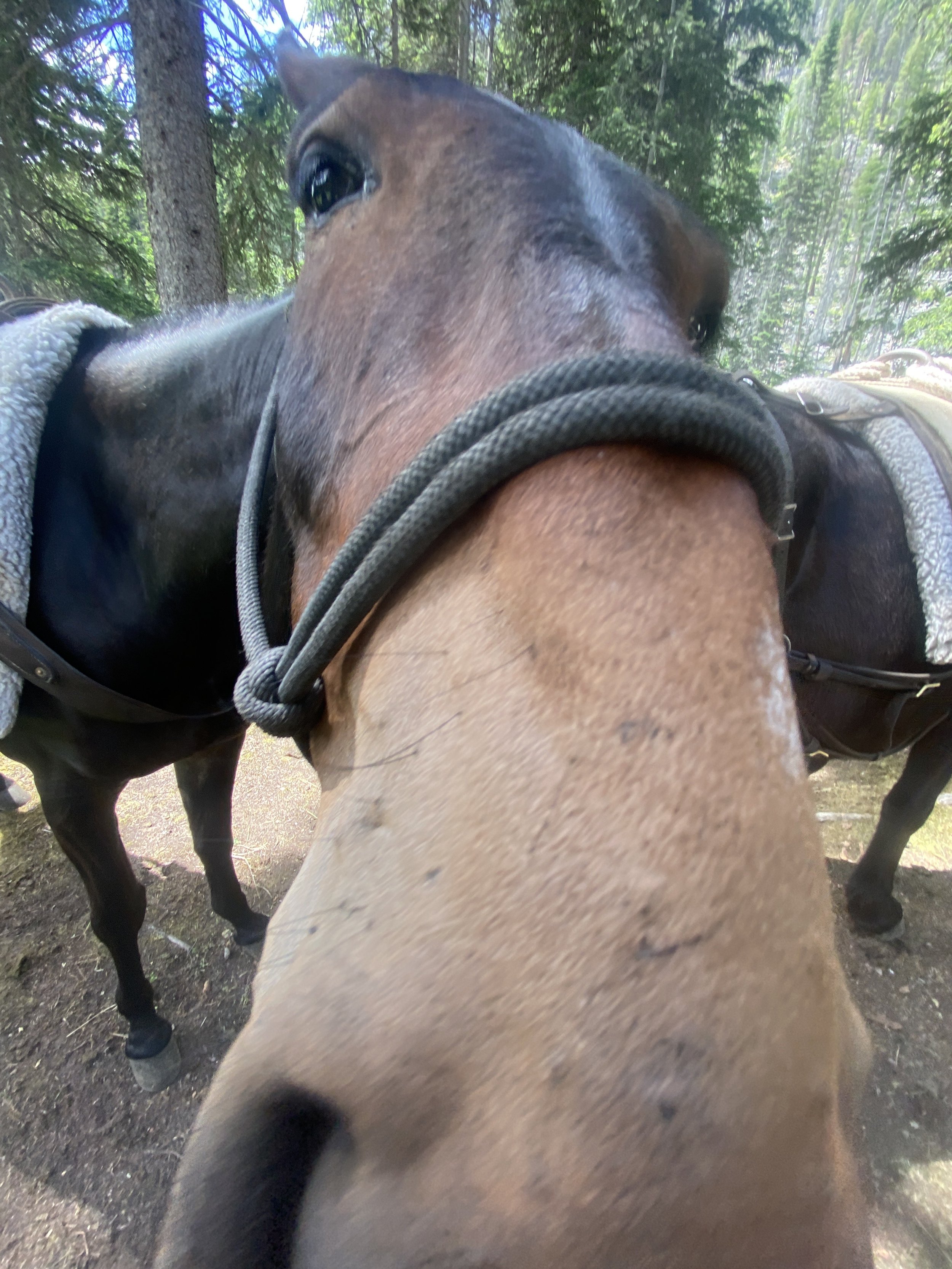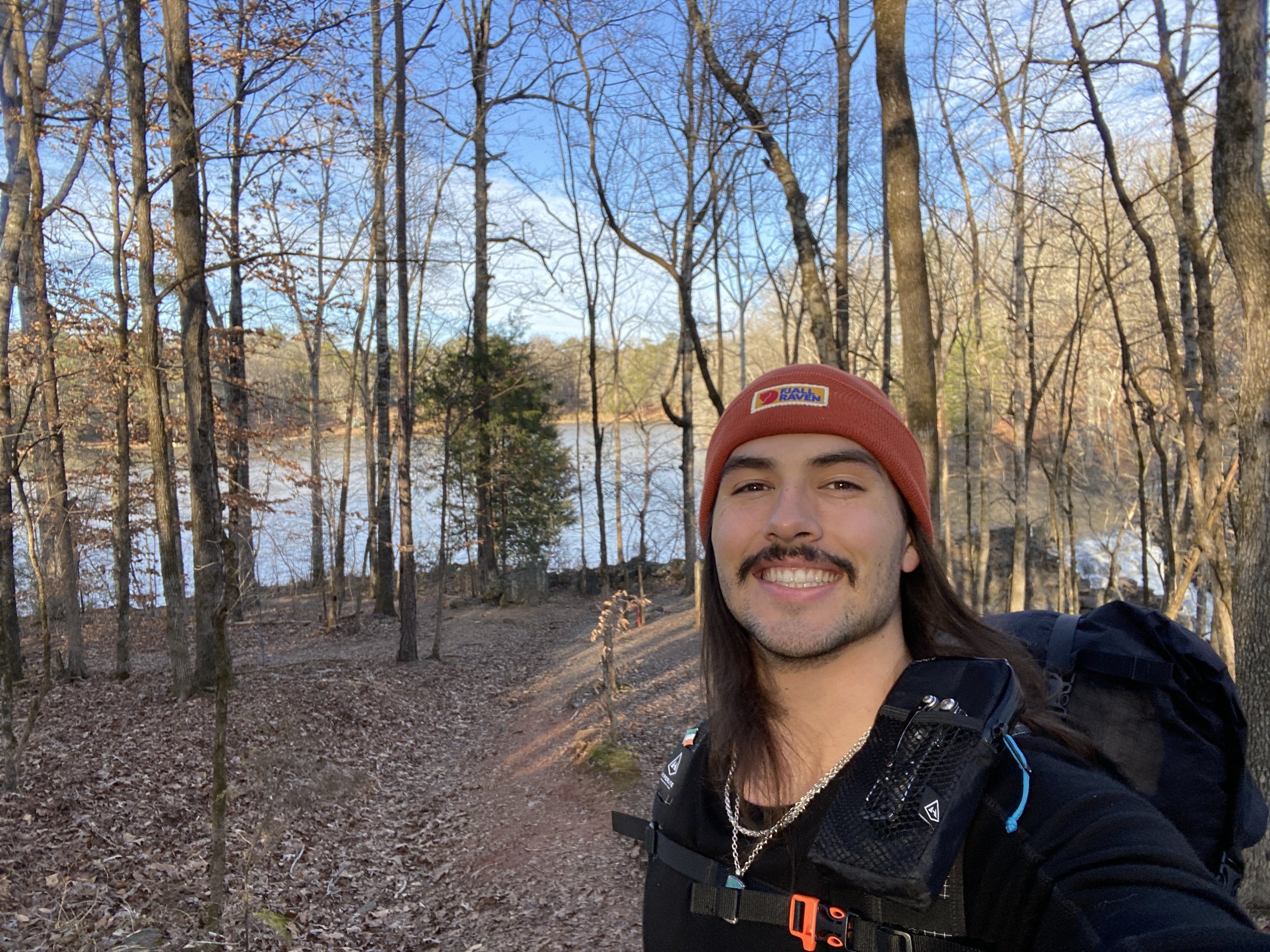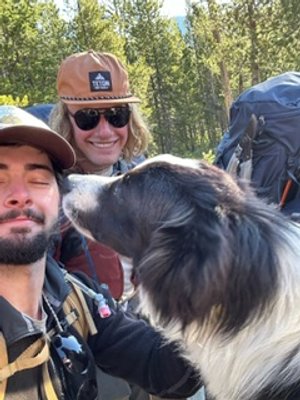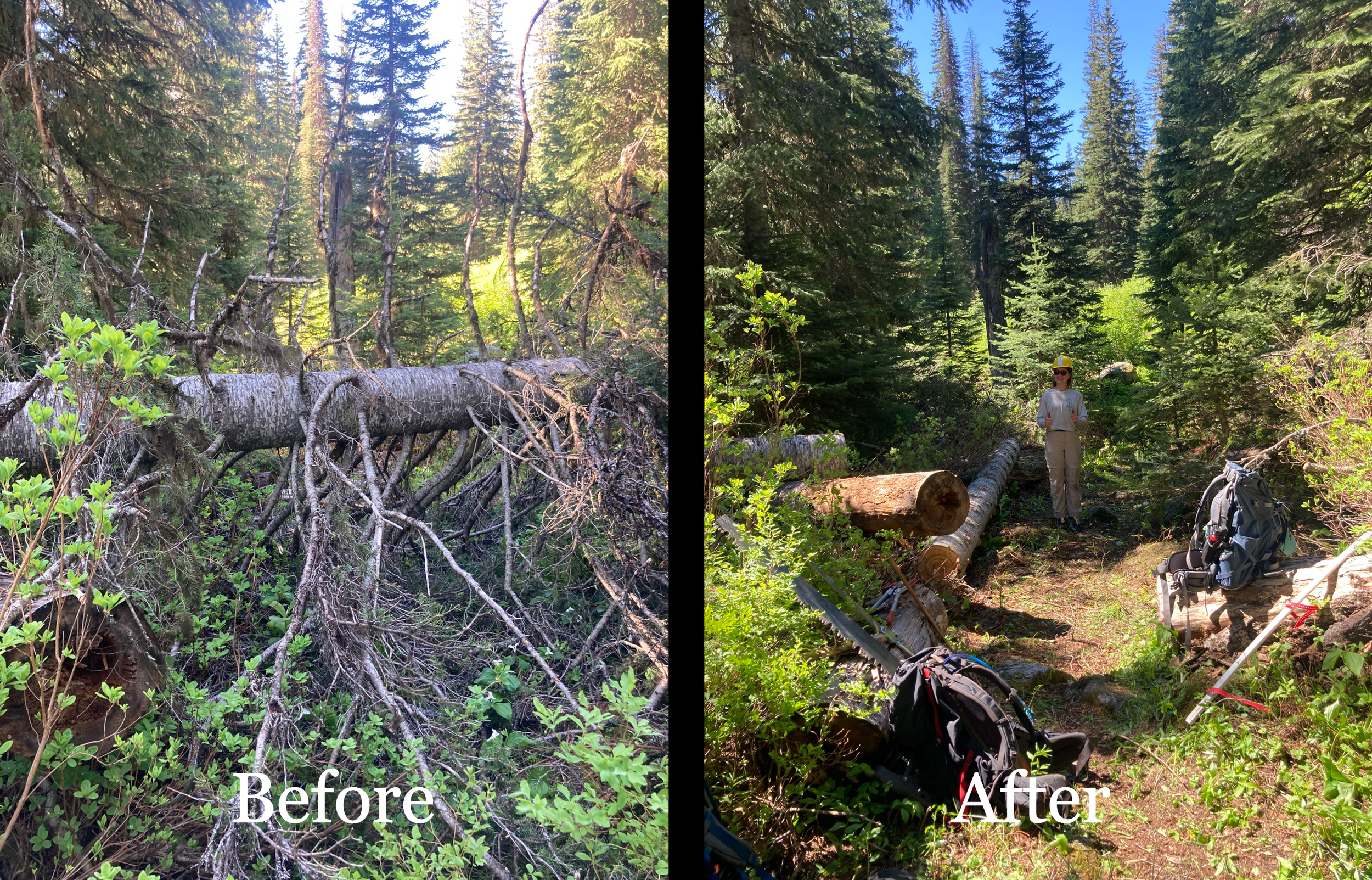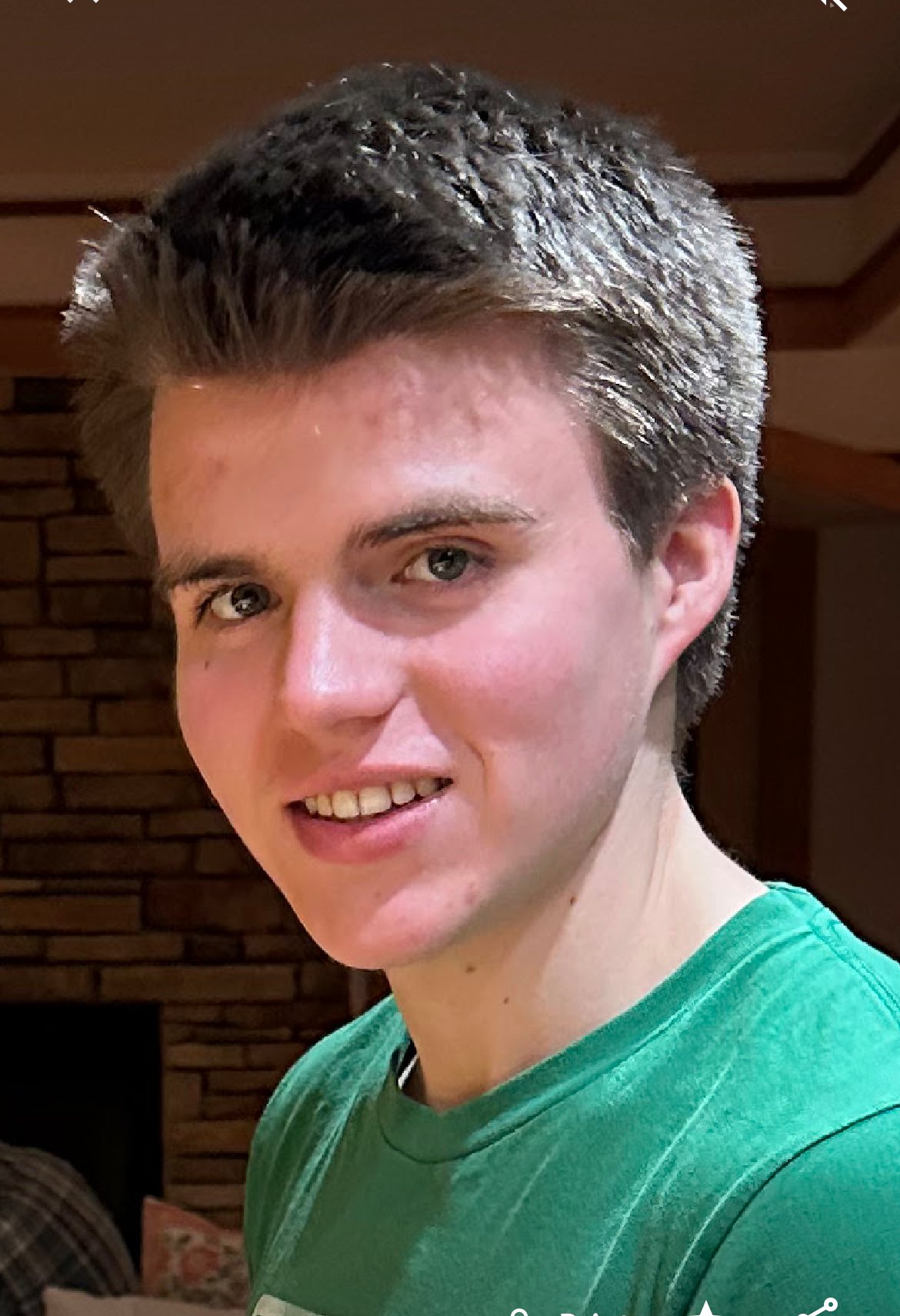Samantha Mobley
Wilderness Ranger Fellow
Packbox Pass / Bear Creek Trails
July 3-11 , 2024
Bitterroot National Forest and Nez-Perce Clearwater National Forest | Selway-Bitterroot Wilderness
Sam at the end of her trip on July 2nd, 2021, at the shore of Big Creek Lake.
Three years ago, almost to the day of this hitch, my best friend and I set out from Bear Creek Trailhead in the Bitterroots to hike a challenging horseshoe loop. Our plan seemed straightforward: hike to Bryan Lake from Bear Creek, go up and over Bear Creek Pass, continue to the Colt Killed Creek junction, turn right, hike a few miles, traverse Packbox Pass to Big Creek Lake, then hike out and return home. Little did we know, it would be far from simple!
Sam at the end of her hitch on July 11th, 2024, at the Big Creek Lake shore.
During our planning phase, we contacted both the Bitterroot and Nez Perce-Clearwater ranger stations. Both informed us they were unsure when the Colt Killed Creek Trail last saw a trail crew. Not knowing much about trail work, we didn't think much of it. Additionally, we hadn't yet discovered apps like CalTopo or Gaia and relied solely on a paper map and compass.
On day two of our trip, while lunching atop Bear Creek Pass, we met two men, both named Greg, who had ascended from the Idaho side. They shared tales of their journey, recounting numerous downed trees and brushy sections of the trail. They credited their GPS map tool for navigating the tricky terrain. When we told them we only had a map and compass, they exchanged a concerned look, but we remained optimistic and pressed on.
Immediately upon descending the snow-covered pass, we lost the trail. We spent four frustrating hours searching for it, only to find that the runoff had likely turned it into a nondescript stream. After a bee sting, a twisted ankle, and a fresh pile of bear scat, we decided to camp there for the night and hike out the way we came the next day. After making it out of the woods, we ventured back in through Big Creek, setting up a base camp at the lake to spend the rest of our week. One day, we took a day trip up Packbox Pass to at least complete the Montana side of our original plan. That trip was very memorable, but I have always yearned to go back and try again.
Sam and Nathan on the largest cut of the hitch- a girthy spruce tree.
This year marks my second season of trail work in western Montana. Last season, I worked with the Montana Conservation Corps (MCC), mostly in the Welcome Creek Wilderness just east of Missoula, where I have lived for the past seven years. While I've spent most of my recreational time in the Selway-Bitterroot Wilderness, I cherish every moment I get to work on the trails there. You can imagine my excitement when I was assigned this hitch, with the objective of clearing the Bear Creek-Colt Killed Creek trail on the Idaho side of the Big Creek-Bear Creek horseshoe.
This hitch has been my favorite so far. We hiked over 60 miles and worked hard every step of the way. It's been a challenging yet rewarding experience, bringing back memories of that initial, unforgettable trip and fulfilling my desire to return to this trail and complete the route. Better yet, I had the wonderful experience of watching my coworkers experience this beautiful country for the first time and opening the trail up for other users.
Crew lead April Eling in a section of very dense brush approaching the Bear Creek Pass.
The junction with the Colt Killed Creek trail and the Bear Creek Trail with co-fellows Nathan and Colby setting up the crosscut.
Sam and her crew lead, April, bucking a large log with the crosscut saw.
This hitch was made possible with funds from Athletic Brewing’s Two for the Trails Grant and private SBFC members/donors.
Missoula, MT
University of Montana- Wildlife Biology
Sam is a recent graduate from the University of Montana with a degree in wildlife biology. She has been living in Missoula for 7 years and loves to spend her free time running, hiking, and skiing in the wilderness. Sam has a background in baking bread, brewing beer, biological field work, and trail work with the Montana conservation corps. Sam is very passionate about the conservation of our wilderness areas and looks forward to beginning her career as a steward for the wild lands she holds near and dear.





